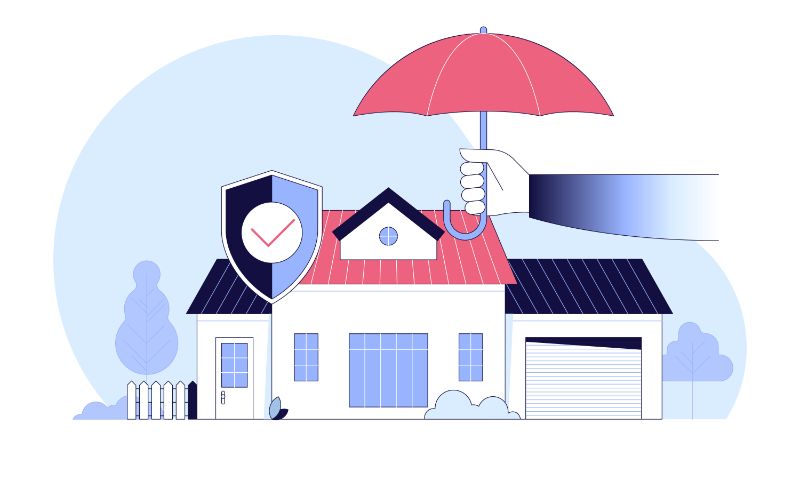Homeowners insurance is an essential safeguard for one of the most significant investments you will make: your home. It provides financial protection against a variety of risks, including damage to your property and personal belongings, as well as liability for accidents that occur on your property. Understanding what homeowners insurance covers is crucial for ensuring that you have the right level of protection. This article outlines the key components of homeowners insurance and the specific types of coverage it typically includes.
1. Dwelling Coverage
Dwelling coverage is the cornerstone of homeowners insurance. It protects the physical structure of your home, including walls, roof, and foundation, against specific perils. These perils often include:
- Fire and Smoke: Damage caused by fire, smoke, and lightning.
- Windstorm and Hail: Damage from high winds, hurricanes, and hail.
- Explosion: Damage resulting from explosions.
- Vandalism and Theft: Damage due to vandalism or theft.
- Falling Objects: Damage from objects falling on your home, such as tree limbs.
- Weight of Ice, Snow, or Sleet: Damage due to the accumulation of ice, snow, or sleet.
It’s important to note that standard policies typically do not cover flood or earthquake damage. These require separate policies or endorsements.
2. Other Structures Coverage
In addition to the main dwelling, homeowners insurance also covers other structures on your property that are not attached to the house. This includes:
- Detached Garages: Coverage for structures such as detached garages or carports.
- Sheds and Barns: Protection for additional storage buildings or barns.
- Fences and Gazebos: Coverage for fencing, gazebos, and other outdoor structures.
Other structures coverage usually provides a percentage of the dwelling coverage limit, often around 10%.
3. Personal Property Coverage
Personal property coverage protects your belongings inside the home. This includes:
- Furniture and Appliances: Coverage for items like sofas, tables, refrigerators, and washing machines.
- Electronics: Protection for electronics such as TVs, computers, and audio systems.
- Clothing and Personal Items: Coverage for clothing, jewelry, and other personal items.
Personal property coverage typically includes protection against the same perils as dwelling coverage. Additionally, it may cover items lost or damaged while away from home. High-value items like jewelry, art, and collectibles may have coverage limits, so additional endorsements or floaters might be necessary for full protection.
4. Liability Coverage
Liability coverage protects you against financial loss if you are found legally responsible for injuries or property damage to others. This can include:
- Bodily Injury: Covers medical expenses, lost wages, and legal fees if someone is injured on your property.
- Property Damage: Pays for repairs or replacement if you accidentally cause damage to someone else’s property.
- Legal Defense: Covers legal defense costs if you are sued for liability.
Liability coverage usually comes with a standard limit, often starting at $100,000. Higher limits are available and advisable, especially if you have significant assets to protect.
5. Additional Living Expenses (ALE) Coverage
Additional living expenses (ALE) coverage helps pay for temporary living costs if your home becomes uninhabitable due to a covered loss. This can include:
- Hotel Stays: Costs of staying in a hotel or temporary housing.
- Food and Dining: Expenses for meals if you cannot cook at home.
- Travel Costs: Additional transportation costs incurred due to the displacement.
ALE coverage ensures that you can maintain your standard of living while your home is being repaired or rebuilt.
6. Medical Payments Coverage
Medical payments coverage, often referred to as “MedPay,” covers medical expenses for minor injuries sustained by guests on your property, regardless of fault. This can include:
- Doctor and Hospital Bills: Payments for medical treatment and hospital stays.
- Ambulance Fees: Costs associated with emergency medical transportation.
- Minor Surgical Procedures: Coverage for necessary minor surgeries or treatments.
MedPay usually has lower limits, typically ranging from $1,000 to $5,000.
7. Exclusions and Additional Policies
While homeowners insurance provides broad protection, there are common exclusions and situations that require additional policies or endorsements:
- Flood Insurance: Standard homeowners insurance does not cover flood damage. Separate flood insurance is available through the National Flood Insurance Program (NFIP) or private insurers.
- Earthquake Insurance: Earthquake damage is not typically covered and requires a separate policy or endorsement.
- Maintenance Issues: Damage resulting from poor maintenance, wear and tear, or neglect is generally not covered.
- Business Activities: Home-based business activities may not be covered under standard homeowners insurance and may require a business insurance policy.
Understanding these exclusions is vital for ensuring that you have the appropriate coverage for your specific needs.
8. Customizing Your Coverage
Homeowners insurance policies can often be customized with endorsements to fit your unique needs. Common endorsements include:
- Sewer Backup: Coverage for damage caused by sewer or drain backups.
- Identity Theft: Protection against costs related to identity theft.
- Home Office: Additional coverage for home office equipment and liability.
- Replacement Cost: Ensures that personal property is replaced at current market value without depreciation.
Consult with your insurance agent to tailor your policy with endorsements that provide comprehensive protection.
9. Conclusion
Homeowners insurance is a vital tool for protecting your home and financial well-being. It covers a wide range of risks, from damage to the structure of your home and personal belongings to liability for accidents on your property. Understanding what is included in a standard policy and recognizing the need for additional coverage or endorsements ensures that you are adequately protected. By carefully reviewing your coverage options and working with a knowledgeable insurance agent, you can secure the right homeowners insurance policy to safeguard your home and assets against potential losses.





